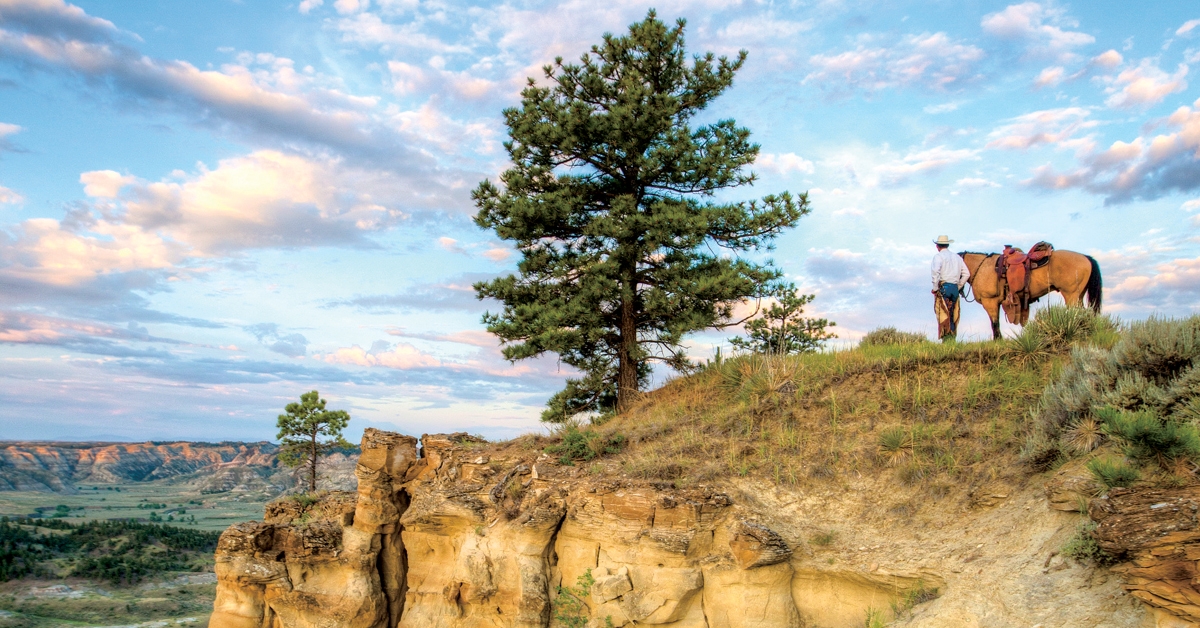Lewis and Clark spent three weeks in 1805 exploring the upper Missouri River breaks on their epic journey across our nation. Today, much of what this intrepid duo and their team saw is still evident in this wild and remote section of our country.
At 495,502 acres, the area has room to roam both for visitors and the animals calling this special area home. Managed by the BLM, “The Breaks,” as locals call it, is a paradise for hikers, hunters, equestrians, anglers, and boaters, with badlands sprouting out-croppings, steep bluffs, grassy plains, and, of course, the mighty Missouri River and its tributaries.
The Monument stretches from Fort Benton to the Charles M. Russell National Wildlife Refuge, including 149 miles of Wild and Scenic River designation.
Parts of the Lewis and Clark National Historic Trail and the Nez Perce National Historic Trail go through the monument. The Interpretive Center in Fort Benton and field offices in Lewistown and Havre offer information about the region.
Visitors can pick up maps, find out about local outfitters, or learn the history of the two historic trails. They can also keep informed about possible road closures and safety tips.
“There are so many historic ties to this land,” explained Josh Chase, acting monument manager.
“There are stories connected to all the old homesteads and the two historic trails,” he said. “In fact, visitors can rent one of the homesteads, the Gilmore Cabin, to get a feel for life in pioneer days.”
A large part of the monument is accessible only by foot, horseback, or watercraft, most often canoes or kayaks.
“Visitors are free to travel wherever they want in the monument,” said Chase, although some private land lies within the property. “People can do dispersed camping, as long as they care for the resource, and really get a chance to enjoy solitude not often available in other places.”
Equestrians can camp and ride anywhere but need to use certified, weed-free hay throughout the monument, according to Chase.
Canoeing the Missouri River through the monument is one of the most popular ways of visiting this remote, wild country. The land has changed little since Lewis and Clark first saw it on their river trip through the area.
Outfitters licensed to guide single- and multi-day trips are easy to find, and non-guided trips are allowed as well. Chase advises people to go to the monument website, look at the travel map, and order the boater’s guide when planning a river trip here. The travel map currently shows 10 launch sites.
“A couple-day canoe trip is an excellent way to sample this country,” Chase explained. “It’s such a remote, wild landscape, and the river is a great way to experience it.”
While canoeing, be sure to bring fishing gear, as anglers can often get into goldeneye and trout with occasional sightings of paddlefish and two kinds of sturgeons. In all, 49 fish species have been counted in the river. Be sure to have a valid Montana fishing license before you wet your line.
Birders will enjoy the wide array of species found here. From bald eagles nesting in cottonwood groves along the river to greater sage-grouse on leks in the spring, pheasants hiding in riparian areas to grassland birds moving through on spring and fall migrations, you’ll stay busy with binoculars every day. At last count, 233 bird species have been listed within the monument.
In late fall, the rut begins to heat up, and game species become more obvious. White-tailed deer, elk, pronghorn antelope, bighorn sheep, and mule deer all inhabit this wild land. Hunting is legal here as long as all game regulations are followed.
Folks interested more in scenery than fishing, hunting, or boating can enjoy short walks within the monument that have spectacular views.
“The Upper Missouri River Breaks National Monument is really remote and not ‘on the way to’ someplace else,” explained Chase. “This National Monument is a destination, not a pass through.”
It’s a slice of wild America that you shouldn’t miss!










